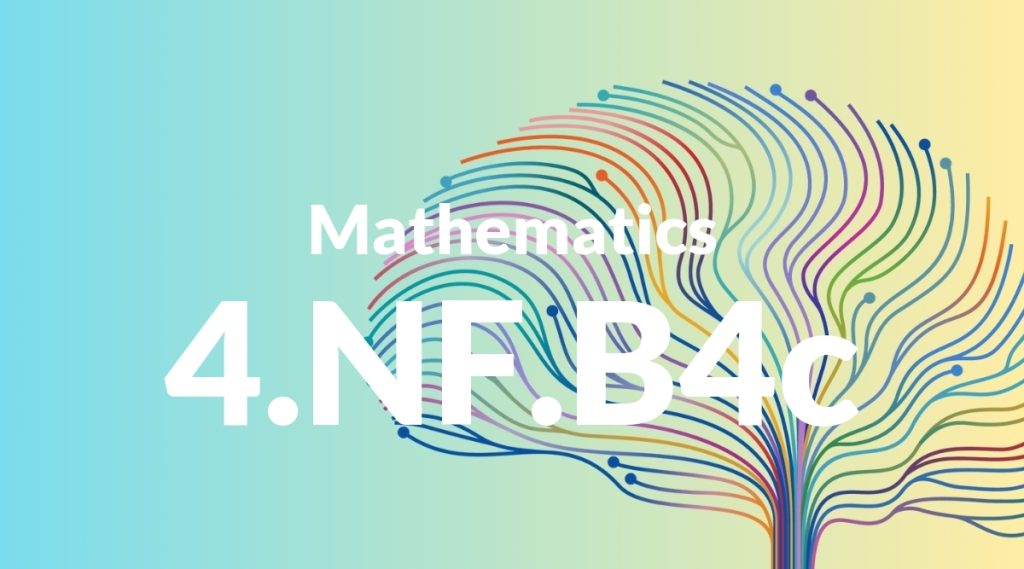Standard: 4.NF.B4c – Solve word problems involving multiplication of a fraction by a whole number, e.g., by using visual fraction models and equations to represent the problem. For example, if each person at a party will eat 3/8 of a pound of roast beef, and there will be 5 people at the party, how many pounds of roast beef will be needed? Between what two whole numbers does your answer lie?
Grade level: Grade 4
Subject: Mathematics
Domain: Numbers & Operations – Fractions
Teacher Overview
This standard focuses on solving word problems that involve multiplying a fraction by a whole number. It is important because it builds on students’ understanding of fractions and extends their ability to apply this knowledge in real-world situations. Students should be comfortable with basic multiplication and division, understand fractions as parts of a whole, and be able to use visual fraction models.
After mastering this standard, students will be able to add and subtract fractions with like denominators, understand decimal notation for fractions, and tackle more complex fraction word problems.
Common Misconception 1
A common misconception is that multiplying a fraction by a whole number makes the fraction larger. This is incorrect because multiplying a fraction by a whole number is essentially repeated addition of the fraction.
Intervention 1
To address this misconception, use visual fraction models and repeated addition to demonstrate how multiplying a fraction by a whole number works.
Common Misconception 2
Another misconception is confusing multiplication of fractions with addition of fractions. Students might add the numerators and denominators instead of multiplying correctly.
Intervention 2
Provide clear examples and practice problems that differentiate between multiplication and addition of fractions. Use visual aids to reinforce the correct process.
Prerequisite Knowledge
Students should understand basic multiplication and division, be familiar with fractions as parts of a whole, and know how to use visual fraction models.
Subsequent Knowledge
Students will develop skills in adding and subtracting fractions with like denominators, understanding decimal notation for fractions, and solving more complex word problems involving fractions.
Instructional Activities
- Using visual fraction models to solve word problems
- Group activities where students solve fraction multiplication problems together
- Real-life scenarios such as cooking or budgeting that involve fractional measurements
- Interactive fraction games that reinforce multiplication concepts
- Worksheets with a variety of fraction multiplication problems




